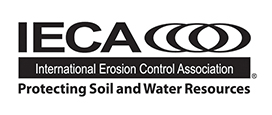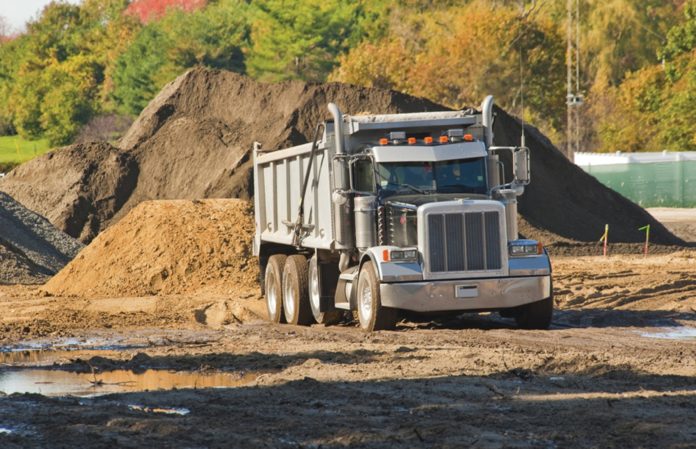Topsoil, as defined by Merriam-Webster dictionary, is “surface soil usually including the organic layer in which plants have most of their roots and which the farmer turns over in plowing.”
While this rudimentary definition describes the most obvious use and location of topsoil, it does not account for the complex and dynamic ecosystem that is ubiquitous with healthy topsoil. Topsoil is an incredible, natural, non-renewable resource that humans depend on for food, fiber and fuel production. More recently it has become viewed as a key tool to sequester carbon and offset climate change.
Most undisturbed locations will have anywhere from 2 to 8 inches (5–23 cm) of naturally formed, healthy topsoil. Prior to disturbance, planning and procedures should be in place to preserve the integrity of the topsoil as it is removed and stored for future use. While some deterioration of the physical, chemical and biological topsoil properties will inevitably take place during initial disturbance, specific practices can be employed to maintain topsoil integrity while it is stored before reapplication to the site during the final phase of construction.
Diminished topsoil quality due to stockpiling is strongly correlated with two parameters: depth of the stockpile and the amount of time that the material is stored.1 Both of these practices are typically designed with two goals in mind — minimize land area occupied by the stockpile and minimize costs.
A key hindrance to proper topsoil management on construction projects is the limited available space in which materials can be stored. In the conscientious effort to minimize footprint, stockpiles are often piled as high and deep as practicable (Figure 1). This practice fits the need to minimize space usage but contributes greatly to reduced quality of the “topsoil” and may yield unfavorable results when later attempting to vegetate intended substrates. While reducing topsoil stockpile depths and taking up more space may not be ideal from an efficiency standpoint, it will ensure much greater viability of the topsoil when placing it for revegetation and site closure.
Depth of Storage Affects Quality
Topsoil, and the ecological components it contains, exists naturally as a surface soil for several reasons: availability of organic/biological inputs, moisture availability and air exchange. Invariably, the greater depth at which topsoil is stored the more rapidly and drastically its health will be disrupted as these key environmental inputs and conditions required for a healthy topsoil are taken away. The topsoil on the outer shell of the stockpile may retain many of its beneficial properties, but for a majority of the material, the deeper the soil is in the stockpile, the more anaerobic the material will become. If possible, storing topsoil in shallow piles, linear berms or “windrows” will allow for better air and moisture exchange leading to greater viability of microorganisms once the material is reapplied.
In addition to shallow stockpiles, plant roots are a critical component to soil health. Temporary seeding is a common best management practice (BMP) to cover stockpiled topsoil to prevent erosion from taking place and to minimize colonization of weed species. A benefit is that roots will penetrate the soil and positively contribute to the previously disturbed ecosystem. Shallow stockpiles with a vegetated cover can allow soils to maintain their ecological cycles and intended function. Cover crops can be hydroseeded with a light rate of mulch and tackifier.
Minimize Storage Time
Time is a critical component of every construction project. Just as topsoil is negatively affected the deeper it is stockpiled; it is similarly affected based on the length of time it remains in that position.2,3 When possible, minimize the time that topsoil is stockpiled on site. By sequencing projects to account for this factor, soils will retain many of their beneficial characteristics. The amount of time these ecosystems are buried and subjected to anaerobic conditions is an essential consideration. To address possible nutrient deficiencies a soil analysis should be performed on topsoil to determine viability and amendment use.
Unfortunately, it is not always a feasible practice to store topsoil for short periods of time in shallow windrows. In this instance, regardless of what storage technique is used, it is imperative to test the topsoil for agronomic viability. Once tested, practitioners will be able to accurately diagnose any deficiencies, toxicities or imbalances that may have resulted due to the extensive storage practices used and develop an amendment recommendation plan to introduce missing components that will lead to a sustainable, productive soil. Soil tests can typically be performed through United States Cooperative Extension Services offices or third-party testing facilities to determine the soil deficiency and potential amendments needed based on the vegetation intended for use.
Revised in 2019, ASTM D5268 – Standard Specification for Topsoil Used for Landscaping and Construction Purposes, introduces Engineered Soil Amendment (ESA) as an alternative solution to traditional topsoil applications. Manufactured under highly controlled conditions some ESAs are composed of recycled biodegradable fibers, biostimulants, biological inoculants and other soil building components to create a contaminant, weed seed and pathogen-free “primordial soup” to regenerate poor soils. This topsoil alternative is “designed to accelerate development of depleted soils/substrates with low organic matter, low nutrient levels and limited biological activity.” By amending these often-diminished properties with materials specifically formulated to increase organic and biological composition, disturbed substrates may be reinvigorated.
There is a plethora of research regarding maximum depth of stockpiled topsoil, maximum time to leave topsoil stockpiled, and how varying soil types are affected. The purpose of this article is not to set a standard practice, rather to raise awareness to these important practices and possible solutions affecting the critical role that topsoil plays in both achieving site closure and ecological enrichment.
References
Fischer AM, Van Hamme JD, Gardner WC, et. al. Impacts from Topsoil Stockpile Height on Soil Geochemical Properties in Two Mining Operations in British Columbia: Implications for Restoration Practices. Mining 2022, 2(2), 315-329. https://www.mdpi.com/2673-6489/2/2/17/htm.
Strohmayer P. Soil Stockpiling for Reclamation and Restoration activities after Mining and Construction. Restoration and Reclamation Review. Student On-Line Journal, Department of Horticultural Science, University of Minnesota, St. Paul, Minnesota. Vol. 4, No. 7, 1999. https://conservancy.umn.edu/bitstream/handle/11299/59360/4.7.Strohmayer.pdf?sequence=1
Birnbaum C, Bradshaw LE, KX, et. al. Topsoil Stockpiling in Restoration: Impact of Storage Time on Plant Growth and Symbiotic Soil Biota. Ecological Restoration Vol. 35 (3), pages 237-245, 2017. https://pichimahuida.info/restor-other_files/Topsoil%20storage%20time.pdf
About the Expert
Matt Welch, CPESC, CESSWI is director of technical development at Profile Products LLC. He works closely with specifiers to ensure that all erosion and sediment control and revegetation efforts, involving Profile’s line of products, will have a high rate of success. He is the current president of the Great Lakes Chapter of the IECA and is on the IECA Professional Development Committee. He was a winner of the IECA’s 4 under 40–Class of 2021 and SWS Young Pros Class of 2022.







